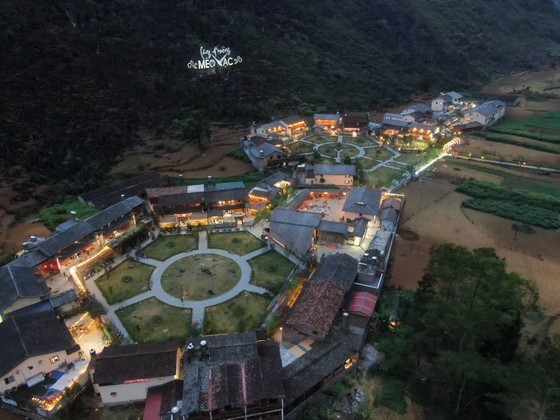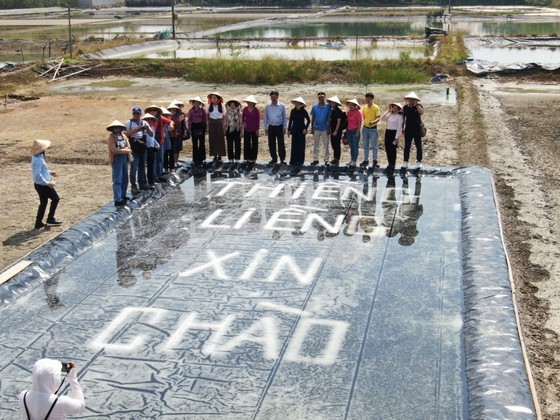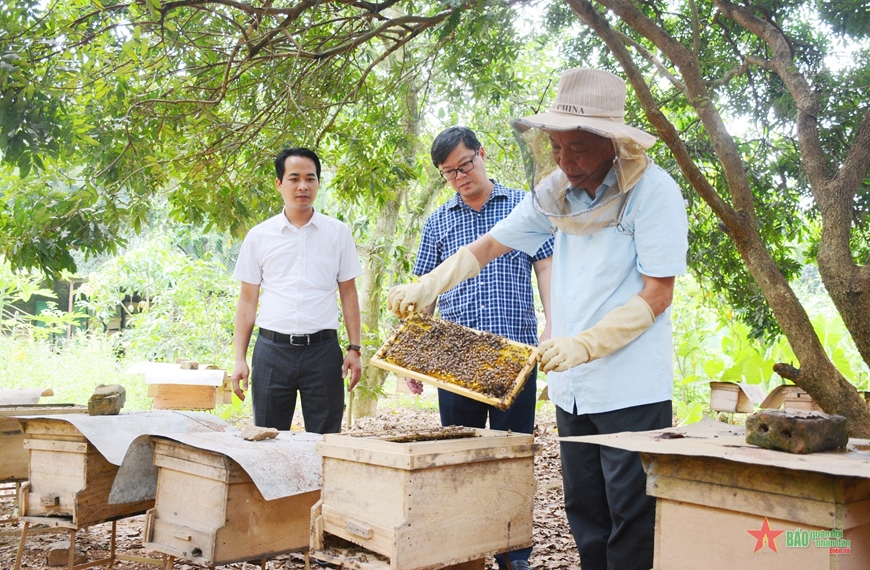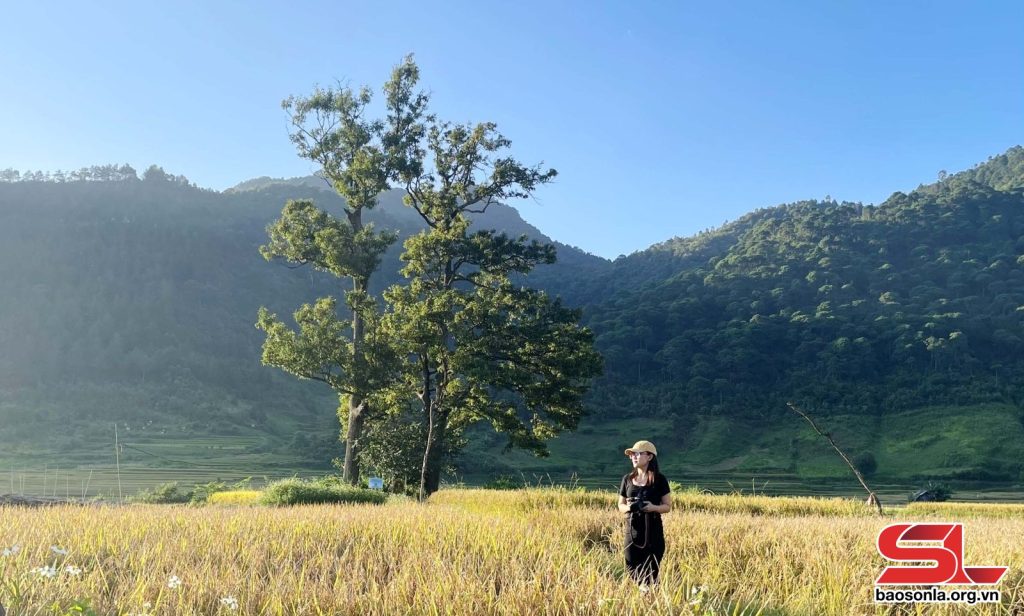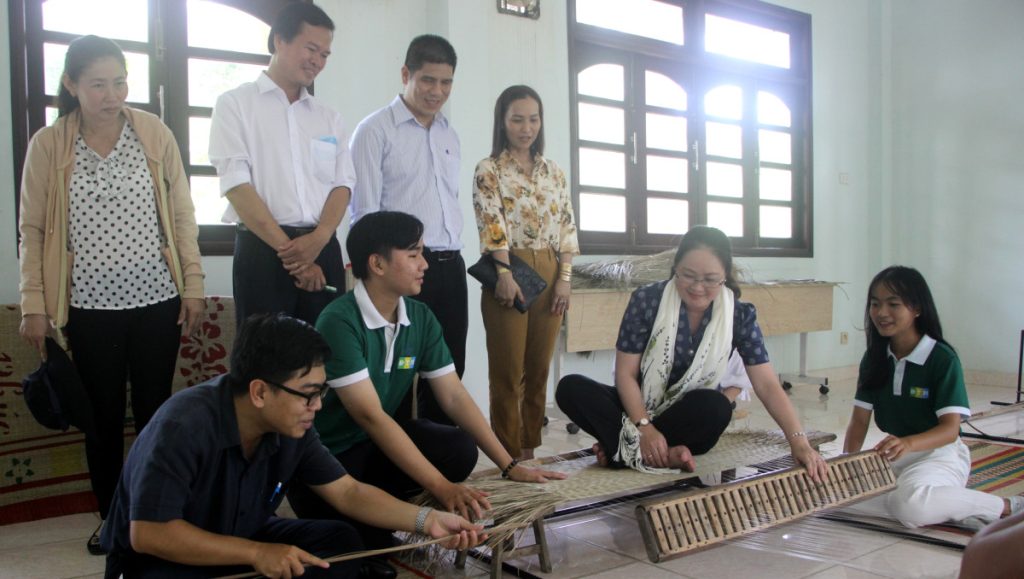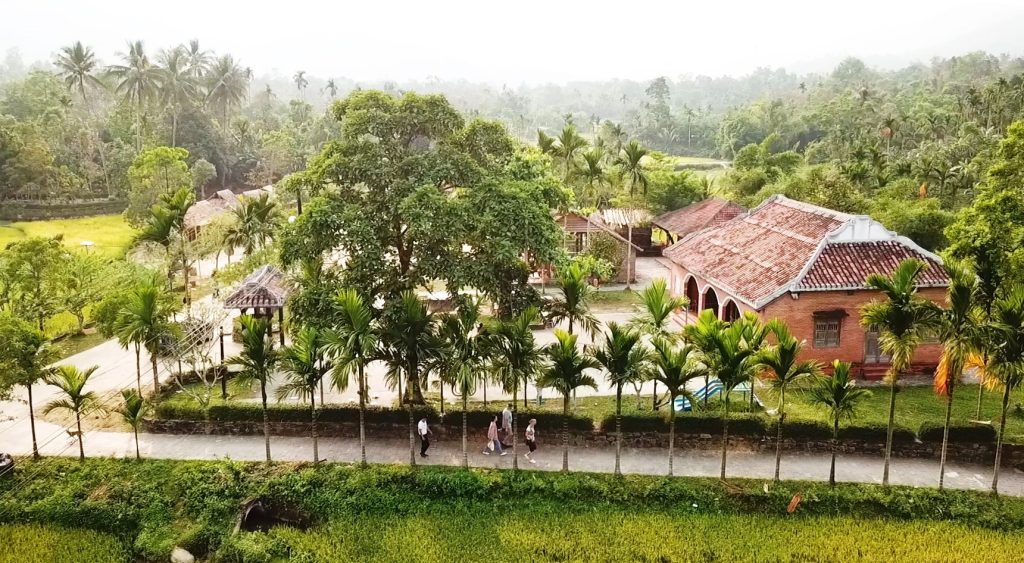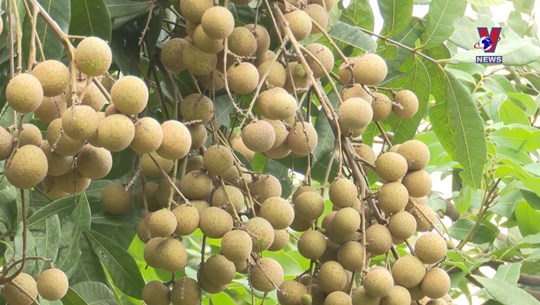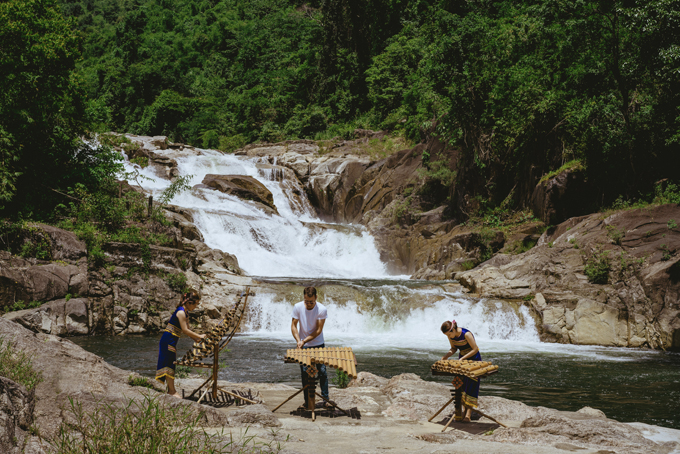Agricultural and farm tours in Thieng Lieng
Tourists at a salt field in Thieng Lieng
Dawn had not yet broken, the sound of roosters crowing and the bustling voices and laughter of salt farmers woke up traveler Nguyen Quang Hanh from the Northern Province of Nam Dinh who followed local farmers at the tourist destination in Thieng Lieng hamlet, Thanh An commune, Can Gio outlying district to experience locals’ daily activities.
Hanh said that Ho Chi Minh City has very interesting agricultural tourism products like this. In the morning, holiday-makers can cycle to visit salt fields, and learn more about wild vegetables, how to prepare ginseng water, and syrups. Experiencing farming is one of Ho Chi Minh City’s community tourism models, opening to welcome visitors at the end of December 2022. The special tour aims to renew products of Ho Chi Minh City’s tourism industry.
According to resident Muoi Gia, her family mainly makes salt, and now works as tour guides to welcome tourists to experience garden cuisine making the salt industry more interesting in addition to earning extra income. Meanwhile, Mr. Nam Doi’s house in Can Gio District welcomes many visitors to enjoy local specialties including wool snails, salted chicken, octopus dipped in young tamarind leaves on weekends or holidays. Although the tourism model linking agriculture and farming has not been implemented for a long time by Ho Chi Minh City’s tourism industry, it has received real attention from people and tourists from near and far.
Some 16 households in Can Gio District joined in farm tours combined with salt-making experience. Households guide tourists to visit the island and experience being salt farmers.
According to Deputy Director of the Ho Chi Minh City Department of Tourism Le Truong Hien Hoa, in 2023, Ho Chi Minh City’s tourism industry will proactively connect and enrich destinations and diversify the choices of tourists. Typically, attractions of Dan Xay eco-tourism area – Vam Sat eco-tourism area – Thieng Lieng community tourism – Giong Chua mountain are connected with oyster farming villages along Dong Tranh river – Dong Hoa seafood market – Village Tam Thon Hiep bird nest farming. The tourism industry develops waterways, along the route of Bach Dang Wharf or Binh Khanh ferry wharf (Nha Be district) – Tam Thon Hiep – Thieng Lieng (Can Gio district), creating convenience for tourists.
Farmers teach students
Starting operations in 2022, the community learning tourism model in Hoa Vang District of the Central City of Da Nang is an ideal meeting place for many tourists across the country. The garden of resident Huynh Thi Xuan’s family in Nam Yen village is now luxuriant with fruit trees. Under the instruction of the garden owner, tourists become vegetable farmers as they know how to dig the soil, plant, water and nurture the plants. After the experience, visitors can enjoy fruits grown by the farmers themselves. For tourists, watering and fertilizing become unforgettable experiences in their lifetime.
A corner of tourist destination in Meo Vac
Community learning tourism is also a lesson for students and interns. Typically, students, and tourists while paying a visit to Gian Bi village of Hoa Bac commune where a community of Co Tu people is earning life by weaving and knitting brocade can enjoy the bustling sound of gongs, generous songs of the Co Tu people in the Tung Tung Da Da dance. Students and travelers are also guided by local ethnic minority people to dance and enjoy local products. Local elderly people will lead visitors to Guol’s house and explain the customs and habits of the people. Irregular income from such tours contributes to the improvement of the villagers who join in the agritourism model, resident A Lang My said.
‘Getting lost’ at the North Pole
Hua Tat and Hoai Khao are one of tourist destinations that easily make tourists fall in love and ‘get lost’ because of the charming landscape and peaceful life. Recently, many tourists have chosen this place as their favorite place to stay.
Subsequently, Son La Province’s Hua Tat village has turned into an attractive community tourism destination. In addition to fresh nature, Hua Tat also has unique homestays with the architectural style of the indigenous H’Mong people. It must be mentioned to Trang A Chu who has started the community tourism bringing to the changes of poor, desolate Hua Tat village.
Man A Chu persistently pursued his learning. However, after graduating from university in Hanoi, he chose tourism at his birthplace. During the first two years, he and his wife struggled due to both financial limitations and lack of experience. Gradually, they attracted customers because they knew how to exploit the local space, landscape and customs of their ethnic minorities in the province.
The dishes with local ingredients such as black-boned chicken and vegetables are served to guests at A Chu’s homestay and are prepared by his wife. Local artists perform traditional music namely flute and lip harp in the evening; holiday-makers can also experience drawing beeswax on fabric, making banh day, pounding rice, and playing folk games. In the book Stories about Vietnam Tourism published by the World Tourism Organization, A Chu Homestay is mentioned as a must-visit place, a typical eco-tourism destination.
Up in the Northeast region, nestled in a vast valley, surrounded by the vast Phja Oac – Phja Den forest, Hoai Khao hamlet of Cao Bang Province’s Nguyen Binh District is home to 200 Dao Tien ethnic minority people. Having all the strengths of majestic natural landscapes and unique indigenous culture, Hoai Khao is still poor because of its closed, self-sufficient lifestyle.
Chairman of Nguyen Binh District People’s Committee Dao Nguyen Phong remembered that initially, officials had to convince each household to join in the agritourism model to have a more prosperous life. People gradually participated in community-based tourism. Groups of households are responsible for providing services to satisfy the needs of tourists; thankfully, their income has become better.

